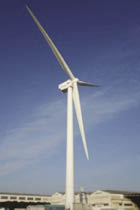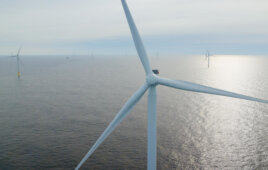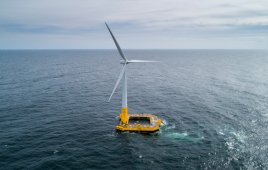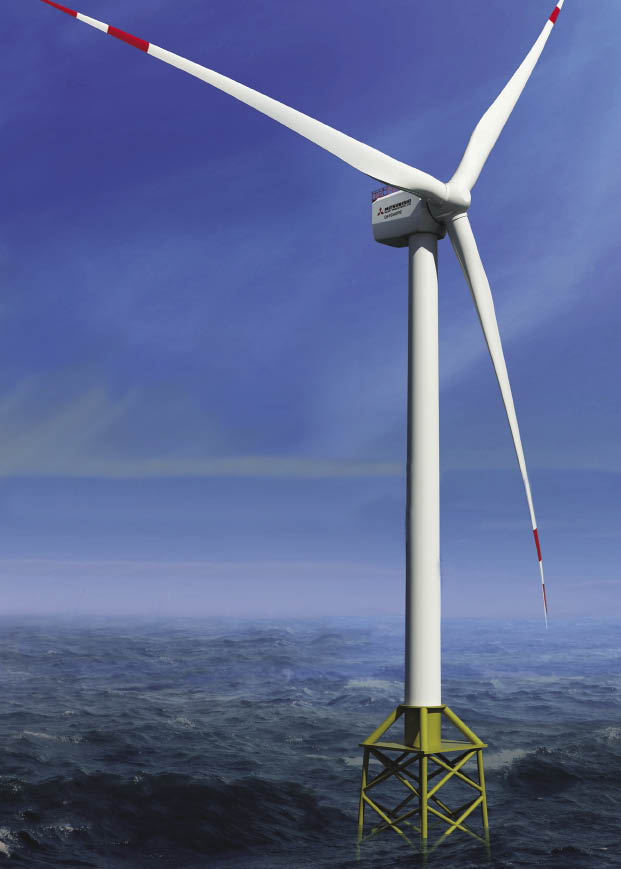
The artist’s concept is of a 7-MW SeaAngel. The turbine is due for installation in the U.K. this year.
Hydraulic drivetrains in wind turbines present great possibilities. For one, a hydraulic pump and motor would allow getting rid of the troublesome gearbox, thereby improving reliability. With such an arrangement, the turbine rotor would turn a variable-volume pump which would drive a hydraulic motor to spin the generator. Accumulators could briefly store excess pump energy and thereby smooth out wind’s variable nature. A few companies have tested hydraulic drivetrains but abandoned the concept because of insufficient efficiency.
Engineers at Mitsubishi Heavy Industries (MHI, www.mhi-global.com) now think the system will work with the help of technology acquired from Artemis Intelligent Power (www.artemisip.com), a U.K.-based hydraulic company that developed unconventional variable-volume pumps and motors governed by computer controls.
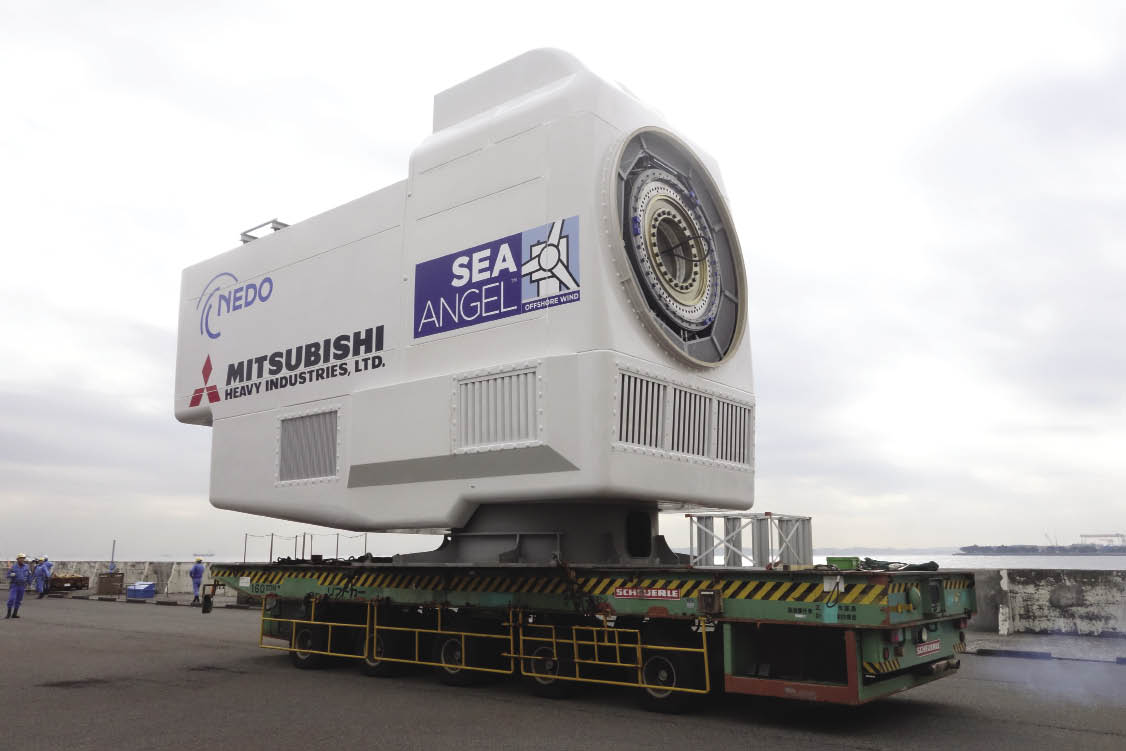
The SeaAngel’s nacelle, being transported at Yokohama Dockyard & Machinery Works, houses the turbine’s DDT hydraulic drivetrain.
Together, the companies have designed and built the hydraulic drivetrain into a working prototype that was launched at Yokohama Dockyard & Machinery Works in Japan late last year. Referred to as the SeaAngel, the test turbine is part of a bigger project to development a hydraulic drivetrain for offshore wind turbines. The prototype is also the world’s first wind turbine with a large-scale hydraulic drivetrain.
Artemis engineers refer to their drivetrain as a Digital Displacement transmission (DDT) and say the Mitsubishi turbine uses the largest one to date. The DDT consist of a Digital Displacement pump and motor replacing a conventional gearbox. The 2.0-MW DDT prototype is based on MHI’s MWT100 gear-driven wind turbine. The hydraulic equipment will provide a 1:100 speed increase for the generator’s design speed of 1,000 rpm.
MHI says the hydraulic drivetrain offers several advantages over conventional systems. For one, it improves on efficiency and reliability by eliminating the conventional gearbox and inverter components that have been problematic. Also, the new configuration is said to improve the cost performance over conventional turbines as a result of its widely used hydraulic equipment, materials, and relatively inexpensive alternators.
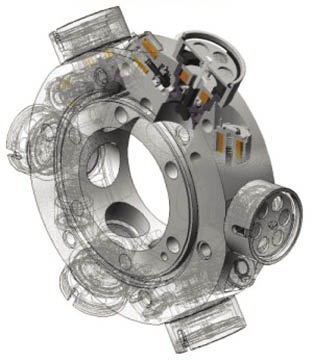
Artemis’ Digital Displacement design is said to increase efficiency by providing an alternative way to build variable-displacement hydraulic pumps and motors. Controls can individually open the valves on a cylinder to change the volume pumped.
Using the concept, a 7-MW offshore wind turbine is due for installation in the U.K. this year, says MHI. Two more on floating platforms have been ordered by the Japanese government for operation off Fukushima, Japan. The new installations are slated to begin trial operations this year and August 2014. The company says a mass-produced commercial model will be targeted for market launch in 2015. WPE
Filed Under: Featured, Offshore wind

